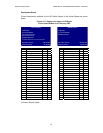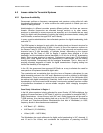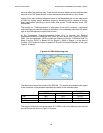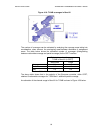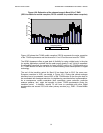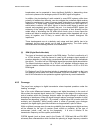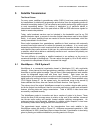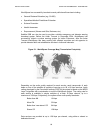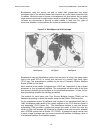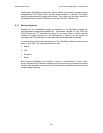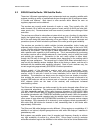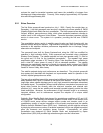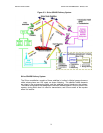DIGITAL RADIO GUIDE SATELLITE TRANSMISSION - WORLDSPACE
65
5 Satellite Transmission
The Broad Picture
For many years, satellites in geostationary orbits (GSO’s) have been used successfully
by broadcasters for distributing programmes and services from the originating studios to
terrestrial transmitting stations. It is cost effective and reliably delivers high quality signals
to each transmitting station. This method of distribution is of particular benefit to
international broadcasters that in the past relied on SSB and DSB short-wave signals for
feeds to remote relay stations.
Today, radio broadcast services can be included in the bandwidth used for an FM
satellite television signal, or as part of a bundle of digital channels as used in Astra Digital
Radio. In all cases, satellite tuners are needed to receive these broadcasts, which are
usually transmitted in the Ku Band.
Direct radio broadcasts from geostationary satellites to fixed receivers with externally
mounted line-of-sight antennas is routine and presents no problems. It is a much more
demanding requirement to reach receivers that are mobile or portable, but the majority of
radio listeners have radio receivers of this type. Any radio transmission system, terrestrial
or satellite, which fails to deliver a satisfactory service to such receivers will probably not
find widespread acceptance.
The main difficulty in providing a satellite broadcast to an audience on the move is
occasional blockage by buildings etc. This can reduce the signal by 10 to 20 dB, which it
is impractical to compensate for with an increased link margin.
5.1 WorldSpace – ITU-R System D
WorldSpace is a commercial organisation based in Washington D.C. with world-wide
interests. It has planned for three geo-stationary satellites, named AfriStar, AsiaStar and
AmeriStar to provide global coverage. They will have L-Band payloads and each satellite
covers its designated target area with three “spot” beams. Each beam has two
transponders (one transparent and one with on-board processing). The aim is to provide
digital radio and ancillary services to audiences in the footprints of these satellites using
ITU-R Digital System D. As the names imply, the continental zones to be served by
these satellites are Africa, Asia and Central and South America. See Figure 5.1.
The primary aim of the original WorldSpace concept is to provide a simple radio service,
but as the project has developed, there is now more emphasis on mobile and multimedia
features involving data and image transmission. Trials of MPEG-4 video have been
successfully completed recently.
The WorldSpace project is innovative and has a number of points in its favour. These
include the size of the coverage areas in relation to the cost of the satellites, advanced
low bit-rate audio coding and straight forward satellite uplinking arrangements. An
enhanced service using terrestrial repeaters for reliable mobile reception is has been
successfully trialled and is being planned for introduction soon.
The approximate target regions for the transmissions from each satellite in the
WorldSpace system are shown in Figure 5.2. AfriSpace commenced operation in 1999
and AsiaSpace in 2000. AmeriSpace has not been launched. Consideration is also being
given to planning an additional satellite for providing service for Europe.



